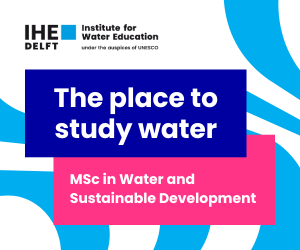Year: 2023
Primary Supervisor: Dr Louis Clement <l.clement@noc.ac.uk>
Institution: National Oceanography Centre
Academic Supervisors: Dr Marilena Oltmans, Dr Noel Gourmelen (University of Edinburgh, School of Geosciences ), Prof Alberto Naveira Garabato <acng@noc.soton.ac.uk>, Prof Eleanor Frajka-Williams, Professor Christine Gommenginger (National Oceanography Centre)
Research Themes: Atmospheric Composition, Earth Observation, Sea Ice
Research Keywords: Atmosphere, Ice
Supervisors: Louis Clement (NOC), Marilena Oltmans (NOC), Eleanor Frajka-Williams (University of Hamburg), Alberto Naveira Garabato (University of Southampton), Noel Gourmelen (University of Edinburg), Christine Gommenginger (NOC)
Scientific motivation
Deep-water formation in the Labrador Sea and the North Atlantic forms a key part of the global ocean overturning circulation that distributes heat, freshwater, gases, momentum and nutrients around the globe. The large-scale ocean circulation mediates exchanges of CO2 between the atmosphere and the deep ocean and thus contributes to the oceanic sequestration of anthropogenic carbon. In a warming climate, the addition of freshwater at high latitudes, driven by melting Greenland ice sheets and enhanced Arctic sea-ice export, can change the density of ocean waters and reduce or shutdown deep ocean convection, thus limiting the ocean’s potential to sequester carbon and mitigate climate change. Recent evidence has identified new pathways of freshwater into the centre of the Labrador Sea which might contribute to slowing or stopping deep convection. However, the origin of the freshwater and the mechanisms driving the observed freshening are not well understood. As a result, the impacts of freshwater input on deep ocean convection are not well represented in climate models, despite expected future increases in freshwater input and the potentially dramatic effects on large-scale climate.
Aims and objectives
The student will investigate the sources and pathways of freshwater to the interior Labrador Sea, whether from sea-ice, ocean eddies, boundary current instabilities or atmospheric forcing, using observations from new and existing satellites, subsurface measurements from autonomous vehicles like ocean gliders, and high-resolution model simulations. The objective is to assess the competing effects of eddies, atmospheric forcing and sea-ice on deep ocean convection.
Methodology
The student will explore the seasonal processes and characteristics of mesoscale and submesoscale dynamics in the Labrador Sea using satellite sea surface height data from the Surface Water and Ocean Topography (SWOT) wide-swath radar interferometer launched on 16 December 2022 and along-track nadir altimeters like Sentinel-3 STM or Sentinel-6 Michael Freilich. The concurrent use of Synthetic Aperture Radar (SAR) images from Sentinel-1 will help to reveal patterns of vorticity in sea-ice that may prevent or enhance submesoscale dynamics and affect lateral freshwater fluxes in the Marginal Ice Zone. This will be augmented with the analysis of data from two glider missions completed in NH winter 2020 and 2022 to assess the role of winter atmospheric forcing for subsurface submesoscale dynamics.
The relative importance and strengths of the freshwater transport mechanisms will be assessed using machine learning with causal discovery methods (Tigramite toolbox), to quantify lead-lag relationships and the probability of causal links in the different datasets. Depending on the student’s interests, the project may include high-resolution model simulations to evaluate the contribution of submescoscale processes to the freshwater budget of the Labrador Sea in models. This evaluation will deliver invaluable insights into the necessity to include these key small-scale processes in climate models.
The student will have opportunities to participate in ocean fieldwork in the Labrador Sea, which may include a scientific cruise on a large oceanographic research vessel and/or a glider deployment from small boats offshore Greenland.
References
- Cassianides, A., Lique, C., & Korosov, A. (2021). Ocean eddy signature
on SAR-derived sea ice drift and vorticity. Geophysical Research Letters, 48, e2020GL092066. https://doi. org/10.1029/2020GL092066 - Thompson, A. F., Lazar, A., Buckingham, C., Naveira Garabato, A. C., Damerell, G. M., and Heywood, K. J., 2016: Open-ocean submesoscale motions: a full seasonal cycle of mixed layer instabilities from gliders. J. Phys. Oceanogr., 46, 1285—1307.
- Våge, K., and Coauthors, 2009: Surprising return of deep convection to the subpolar North Atlantic Ocean in winter 2007-2008. Nat. Geosci., 2, 67–72, doi:10.1038/ngeo382.
